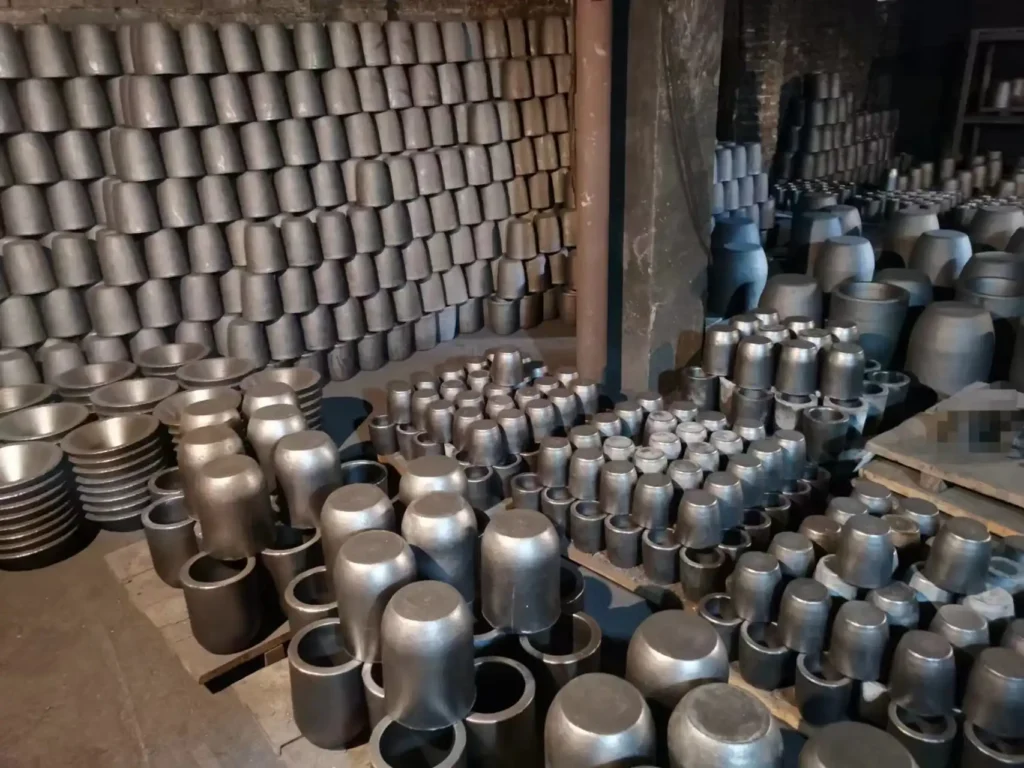What Is Clay Graphite Crucible: An Ultimate Guide
Learn everything about clay graphite crucibles in this ultimate guide. Discover properties, advantages, disadvantages, and how to use and care.

Clay Graphite Crucibles Introduction And Properties
Clay graphite crucibles are extensively used in metallurgical and metal melting industries for melting and casting various metals. These crucibles are made of a blend of clay and graphite, which imparts several unique properties that make them ideal for high-temperature applications.
One of the key benefits of using clay-graphite crucibles is their ability to withstand high temperatures without cracking or breaking, which is crucial in projects where metals need to be melted at extremely high temperatures. Additionally, these crucibles have excellent thermal shock resistance, meaning they can handle rapid temperature changes without cracking or breaking.
Another advantage of clay-graphite crucibles is their resistance to chemical corrosion by molten metals. The graphite in the crucible reacts with oxygen in the air to form a protective layer of graphite oxide, which prevents the molten metal from corroding the crucible. This chemical resistance ensures that the purity of the melted metal is maintained and prevents contamination, making them a reliable choice for industrial applications.
Clay graphite crucibles are highly durable, offer excellent thermal shock resistance, and are resistant to chemical corrosion, They are also the less expensive of all the graphite made crucibles. making them a go-to choice in high-temperature applications in various industries.
Pros And Cons Of Clary Graphite Crucible In Foundry
Pros
Thermal stability: The crucibles have excellent thermal stability, allowing them to withstand high temperatures up to 1800°C (3272°F) without cracking or breaking. This makes them ideal for use in furnaces and other high-heat environments.
Chemical resistance: They are highly resistant to chemical attack from molten metals, acids, and alkalis. This ensures the purity of the melt and prevents contamination.
Good thermal shock resistance: They have good thermal shock resistance, meaning they can withstand sudden changes in temperature without cracking or breaking.
Cost-effective: They are relatively inexpensive compared to other types of crucibles such as silicon carbide.
Cons
Limited lifespan: They have a limited lifespan, especially when used in high-heat environments. Over time, the crucible may develop cracks and degrade, requiring replacement.
Limited capacity: They have a limited capacity, which limits the amount of metal that can be melted and cast at one time.
Fragility: They can be fragile, and if dropped or mishandled, they may break or crack, rendering them unusable.
Fire risk: When used in high-heat environments, such as inside a furnace, They can pose a fire risk if not handled properly.
How To Use Clay Graphite Crucibles For Metal Melting?

How To use
Cleaning the crucible: To ensure that the crucible is clean and free of contaminants, use a soft cloth or brush to remove any dust or debris. Also, make sure the crucible is dry.
Adding flux: Add the appropriate amount of flux to the crucible. During melting, flux is used to remove impurities and prevent oxidation. Metal types will determine how much flux is required.
Assemble the crucible: Place the metal to be melted into the crucible, but don’t overload it, as this may cause it to crack. Leave some room at the top of the crucible for expansion during heating.
Heat the crucible: Put it in the furnace or kiln. Start heating slowly, then gradually raise the heat. Don’t heat the crucible too fast, because it could crack or break. When the temperature reaches the right level, maintain it for a while.
Into the mold or casting: Once the metal has melted, carefully pour it in. Wear safety glasses, gloves, and a face shield to protect yourself.
Clean the crucible: After pouring the metal, allow the crucible to cool completely. If any metal or flux residue remains, clean the crucible thoroughly after it cools.
In order to melt metal safely and efficiently, it’s important to prepare and handle the crucible correctly. By following the steps above, you can ensure that the crucible is properly loaded, heated, and poured. To prevent injuries and damage to your equipment, wear the right protective gear and handle the crucible carefully.
Maintenance Instruction: How To Make It In Good Form And Work Longer?
In the metal casting industry, The clay crucibles are essential for melting and casting different metals. Proper maintenance can ensure they last longer and perform better:
Keep a crucible plate handy: Always use the crucible plate to keep the bottom of the crucible from getting damaged.
Be sure not to overload the crucible: If you overload the crucible with too much metal, it could crack or break.
Cool the crucible slowly after use: Don’t cool it down too quickly, or it’ll cause thermal shock and damage.
Open the furnace door only when necessary: Opening the furnace door too often can cause thermal shock and damage the crucible.
Keep the crucible safe: Be careful with the crucible, as it is fragile and prone to breaking. Don’t drop it.
If your crucible gets cracks or other damage, refine it gently with a file or sandpaper to smooth out any rough edges.
Avoid storing the clay material made graphite crucible in a damp or humid place. Moisture can break down it over time.
You can keep your crucible in good condition by following these maintenance tips. Proper care and maintenance will help prevent damage and ensure that it does its job.
One Stop Graphite Supply From FS Graphite
FS Graphite supplies high-quality graphite products, like graphite moulds, graphite crucibles, graphite saggers, and more. You can count on FS Graphite to meet all your graphite needs with our top-notch manufacturing facilities and commitment to quality. Every product they make is of the highest quality, and their experienced team ensures it gets done right the first time.
Choose FS Graphite if you need high-quality clay graphite products. You can count on us for all your graphite needs, with our comprehensive product line and exceptional customer service.
